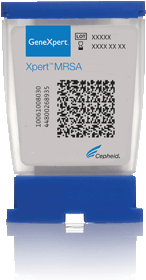 Cepheid has signed a group purchasing contract with Novation, making its GeneXpert System and Xpert MRSA tests widely available in the U.S. at lower, pre-negotiated prices.
Cepheid has signed a group purchasing contract with Novation, making its GeneXpert System and Xpert MRSA tests widely available in the U.S. at lower, pre-negotiated prices.
Novation represents 49% of admissions, 52% of total surgeries and 44% of staffed beds in the U.S., through its affiliation with the VHA, University HealthSystem Consortium and Provista, LLC.
“Institutions accessing Novation contracts are recognizing that active surveillance, with rapid turnaround time, is a key component of a comprehensive infection control program,” said Rob Koska, Cepheid’s Senior Vice President of Worldwide Commercial Operations.
Though I have, in the past, dismissed MRSA as a ‘celebrity’ among plagues, the condition appears to have some staying power, unlike Ebola or SARS. MRSA is cited as one of the leading causes of Healthcare Acquired Infection (HAI); its prevalence has increased every year since 1970. One Sentinel reader comments,
“My father just died from MSRA2 that he obviously got while in Rehab. He lived in Europe. What saddens me the most is that we saw a pimple like sore on his leg at midnight 4/15/08 which had grown to a size of a baseball by 3am and busted open by 6am to where we called the ambulance and he had emergency surgery … it was a MSRA2 infection. He died on April 20, 08. I keep wondering had we known what it looked like, had we called the ambulance at 12 or 3 at first sight, would it have made a difference.”
Cepheid got FDA approval for its MRSA blood, skin and soft tissue diagnostic back in April 2007. The tests are designed to enable simultaneous rapid detection of two leading causes of HAI – MRSA and Staphylococcus aureus – in approximately 70 minutes.
Studies published in both the Journal of the American Medical Association and the Annals of Internal Medicine have shown that test turnaround time is critical to controlling infection rates.
In 2007, the GeneXpert System and clinical diagnostics were a growth driver at Cepheid.
Overall product sales increased 41% to $116.5 million in 2007 from $82.4 million in 2006. As a percentage of revenue, the company’s line of clinical molecular diagnostics contributed over 50% of revenues up from 24% of sales in 2006.
Growth was seen primarily in instrument sales which doubled to $47 million in 2007. Reagent sales remained strong, growing 15% to $68.7 million.